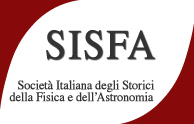Speaker
Description
In this study we will analyse the status, meaning and implications, also at the educational level, of J.J. Thomson's and R. Millikan's respective research concerning the discovery of the electron and the measurement of its electric charge. In this regard, two experiments are usually addressed in secondary school and university textbooks as well as in many websites and Encyclopaedic entries: the measurement of the e/m ratio in the case of cathode rays in 1897 by the English physicist Sir J.J. Thomson, labelled as the "discovery of the electron" experiment, and the oil-drop experiment in 1911 by the American physicist R. Millikan, labelled as the "measurement of the electron charge". Filling this 14 years' jump against the background of the historical conceptual difference between the terms "electron" (already coined by G.J. Stoney in 1891) and "corpuscle", we will show that Thomson was in fact the first one to measure the electron (his "corpuscle") charge in 1899, and that Millikan was not even the first one to use an experimental method consisting in catching ions on droplets and measuring their speed inside vertical electrical and gravitational fields. This does not mean, of course, that Millikan's role was not fundamental: his interest was in the elementary charge and his great merit was that of demonstrating that all charges are integer multiples of an elementary charge, which is the same as the charge of the electron. Thus, Thomson and Millikan had two completely different research programs and as such they should therefore be disentangled.

